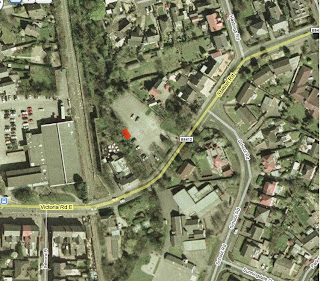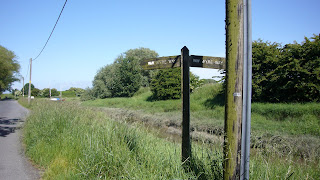Part OneTonight is the second installment of St Chads Parish Records and is looking at Thornton’s best dressed.
I was surprised at the number of people involved in clothing production as I thought at this date most would have been produced at home.
Flax Dresser
1789-1791 – Joseph Wilcock
Now I have to confess when I first read this I thought it as something to do with candles .. shows what I know! A flax dresser is someone who prepares the fibres from the flax plant before they are spun into linen.
The first process is 'thrashing the flax' to remove the seeds which were used elsewhere. The flax is then ready for 'retting' which is where the inner stalk is rotted away to leave the fibres. This is usually done by soaking the flax in water and due to the terrible odour produced was done in running water where possible but ponds where not. Another method was to lay the bundles out in the fields and allow the dew to collect on it .. this took the longest time ( about a month) but produced the highest quality flax fibres.
Dressing the Flax
This is where the straw is removed from the fibres and consists of 3 steps:
Breaking – this is where the flax is beaten to soften it.
Scutching – the flax is hung up vertically and a scutching knife is swung down the fibres to remove pieces of stalk.
Heckling – the remaining fibres are pulled through various different sized heckling combs which get smaller and finer.
After the last comb there are 2 grades of flax: the fibres pulled throught he comb are the finest and the fibres and stalks ‘combed out’ called ‘tow’ produce a lower quality coaser fibre as they still contained some stalks.
Weavers
1784-1787 – Oliver Holden
1788 –
....... Simon Holden – cotton weaver
1789 –
....... William Bullen
1790-1796 – John Gregson
1797 –
....... William Gregson
As some of the weavers have the same surname it is likely that they could have been working together. With the port of Skippool nearby the raw material could have been grown locally or imported. Simon Holden is listed as a ‘cotton weaver’ which at the time also reffered to a type of finish on woolen cloth and did not necessarily refer to the fabric although again actual cotton could have been imported.
Taylors
1783 –
....... Christor Collinson
1783-1787 – Thomas Hornby – Trunnall (Trunnah)
1784 –
....... George Hornby
1784-1790 – Nicholas Hodgson (alias Tully)
1786-1797 – James Cowel
Again 5 taylors is more than I would have thought for Thornton with most of the population being farm/land workers. I do like an alias though.
Shoe Makers
1783 –
....... Richard Greenalgh
1790-1791 – Lawrence Anyon
1797 –
....... William Sharples
I was a little disappointed not to see a clog maker or cobbler amongst this lot.
Cordwainer
1793 – John Pearson
Again I will show my ignorance as I thought this was to do with ropes.
A cordwainer is someone who makes things from high quality leather and especially fine boots for the upper classes and nobility. This is definitely not your common or garden shoe maker unless of course he was just bigging himself up!
Now for the QuizWhere in Thornton am I ? ...
Answers here as usual
A



















